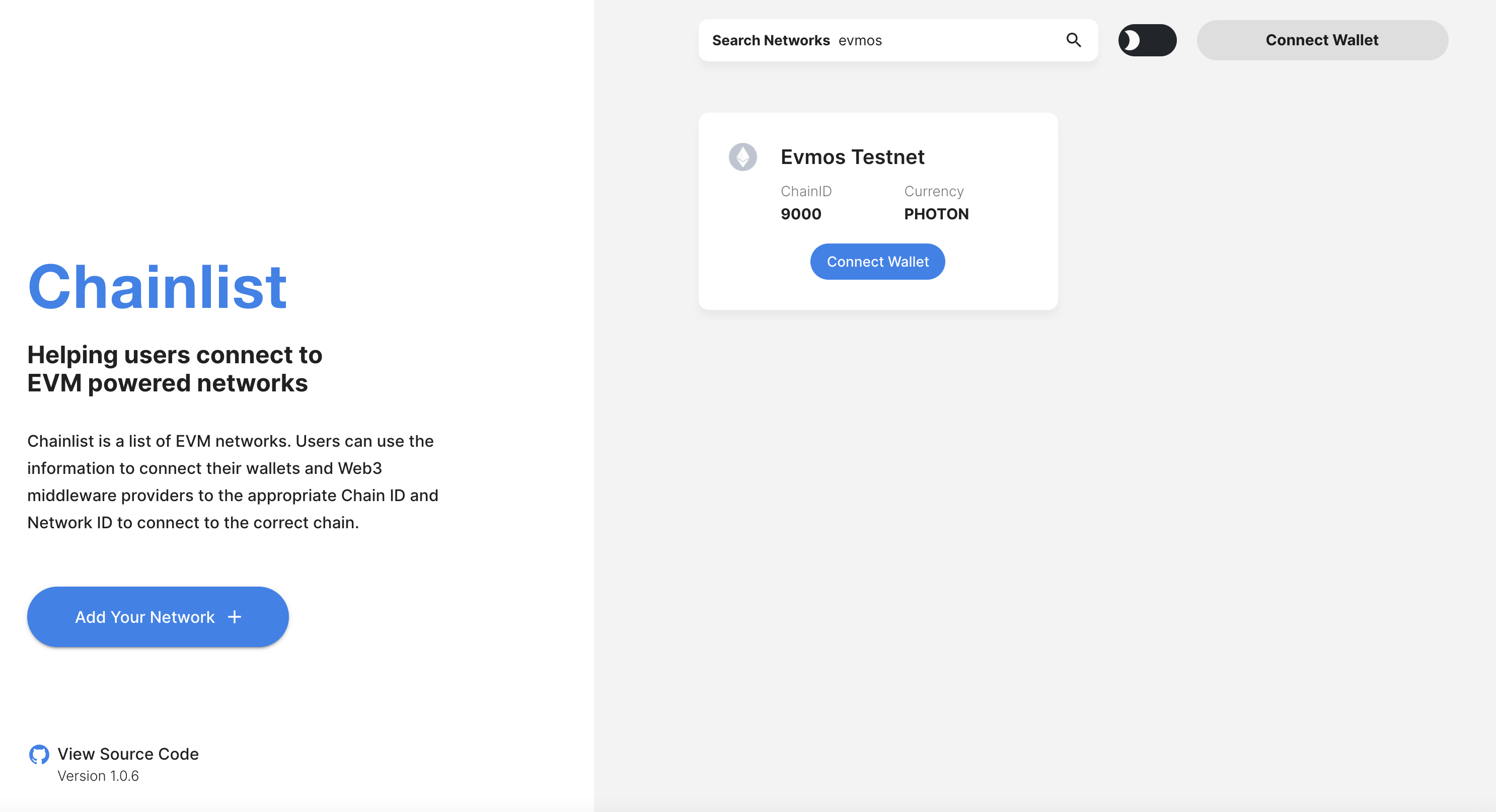Chain ID
Learn about the Point Chain chain-id format
Official Chain IDs
NOTE: The latest Chain ID (i.e highest Version Number) is the latest version of the software and mainnet.
| Name | Chain ID | Identifier | EIP155 Number | Version Number |
|---|---|---|---|---|
| Point Chain 1 | point_10687-1 | point | 10687 | 1 |
| Name | Chain ID | Identifier | EIP155 Number | Version Number |
|---|---|---|---|---|
| Point Chain Public Testnet Uranus | point_10731-1 | point | 10731 | 1 |
You can also lookup the EIP155 Chain ID by referring to chainlist.org.

The Chain Identifier
Every chain must have a unique identifier or chain-id. Tendermint requires each application to
define its own chain-id in the genesis.json fields. However, in order to comply with both EIP155 and Cosmos standard for chain upgrades, Point Chain-compatible chains must implement a special structure for their chain identifiers.
Structure
The Point Chain Chain ID contains 3 main components
- Identifier: Unstructured string that defines the name of the application.
- EIP155 Number: Immutable EIP155
CHAIN_IDthat defines the replay attack protection number. - Version Number: Is the version number (always positive) that the chain is currently running. This number MUST be incremented every time the chain is upgraded or forked in order to avoid network or consensus errors.
Format
The format for specifying and Point Chain compatible chain-id in genesis is the following:
{identifier}_{EIP155}-{version}
The following table provides an example where the second row corresponds to an upgrade from the first one:
| ChainID | Identifier | EIP155 Number | Version Number |
|---|---|---|---|
point_10687-1 | point | 10687 | 1 |
point_10687-2 | point | 10687 | 2 |
... | ... | ... | ... |
point_10687-N | point | 10687 | N |